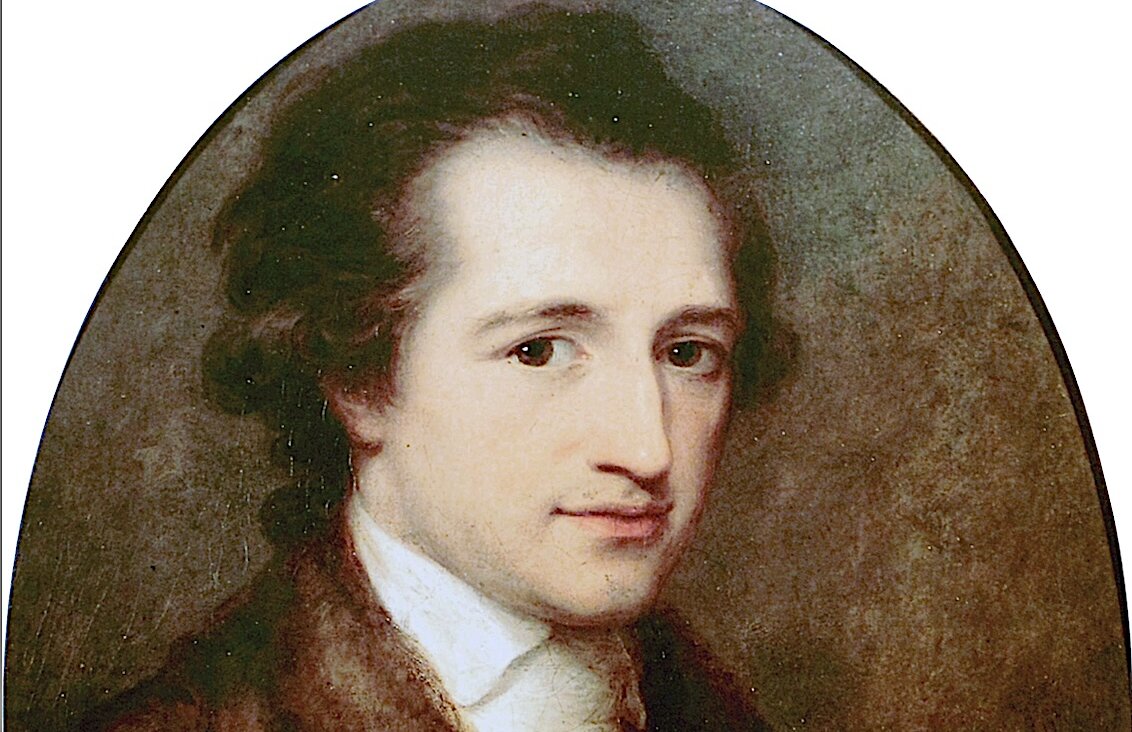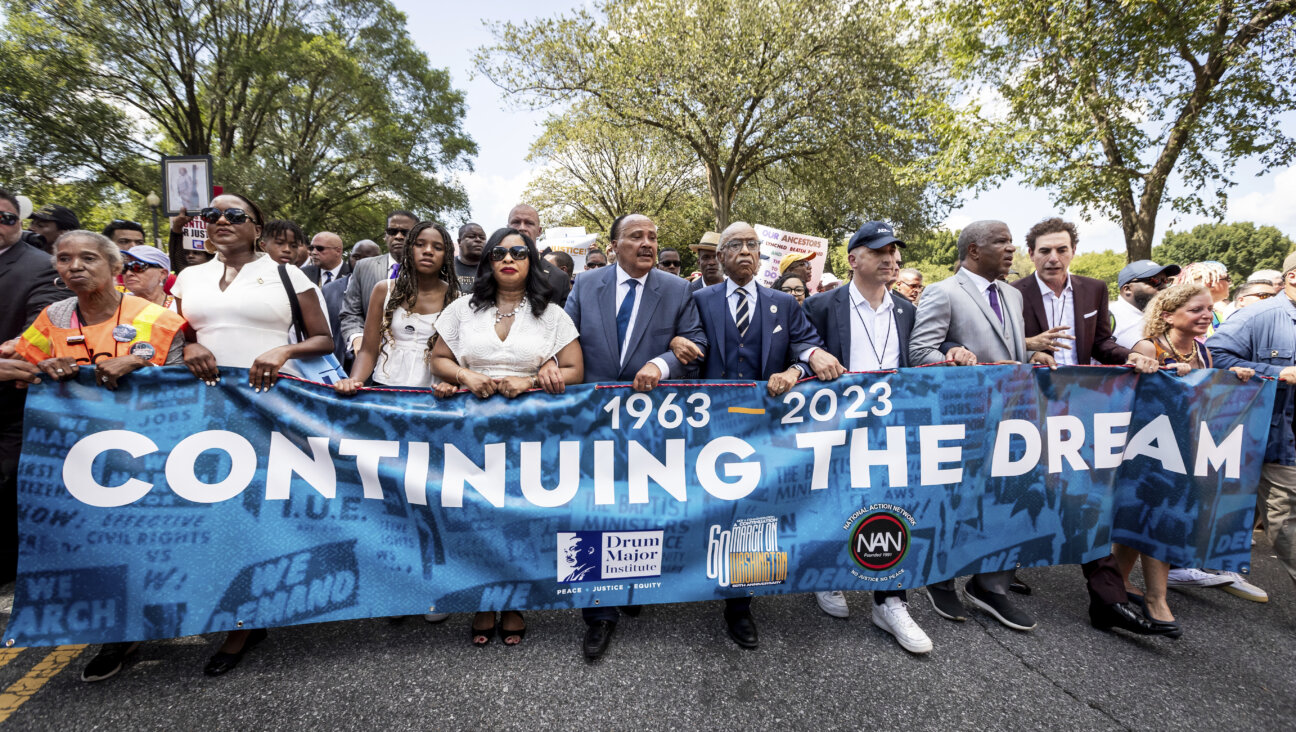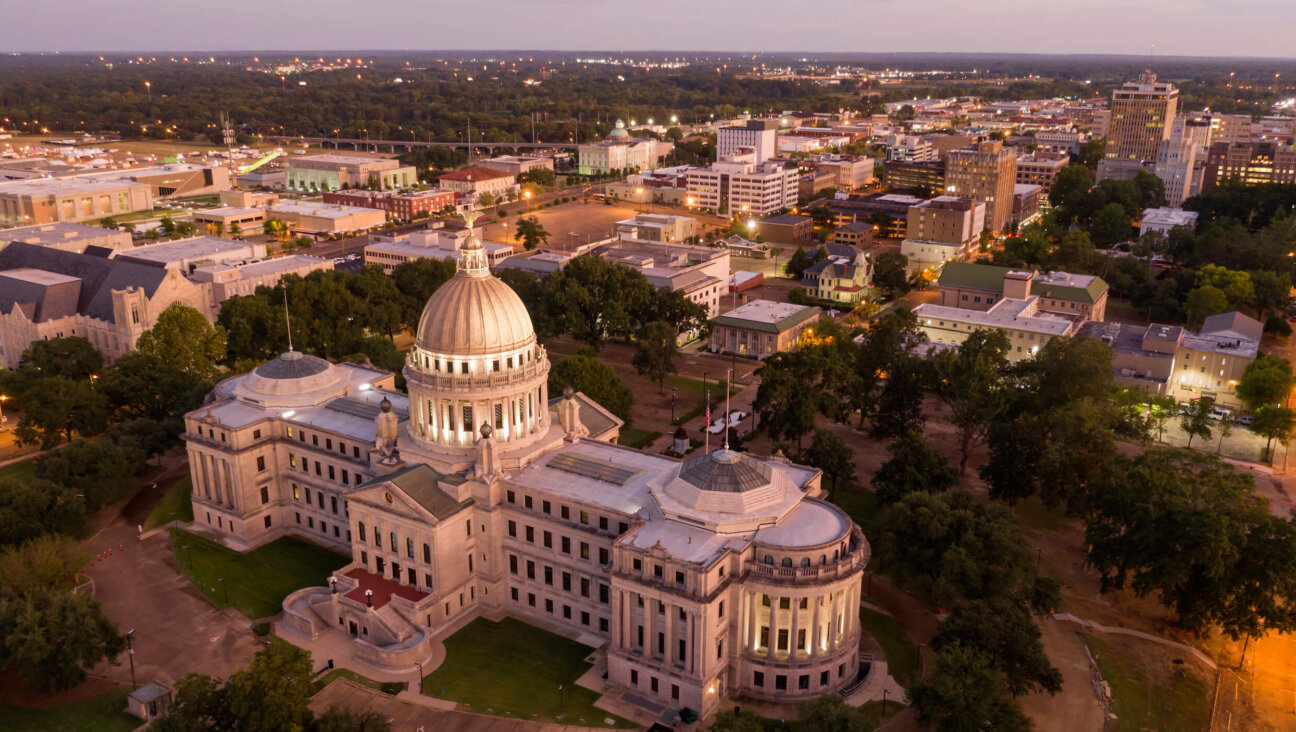Finally, Der Nister Gets a Gravestone

Graphic by Angelie Zaslavsky
This article originally appeared in the Yiddish Forverts.
Abez. A small station on the Northern railway line more than 2,200 kilometers from Moscow – and only 7 kilometers before the Arctic Circle, where the taiga forest turns into the endless tundra.
You won’t find the name Abez on any train station because there is no station. The train drops you off in the middle of nowhere. Almost. Here and there among the small bushes you see faded ruins and barbed wire fences. A friendly puppy comes out to greet the unexpected guests. And no one else. Thick clouds of mosquitos block the lonesome landscape.
The black concrete path leads you to what was once a Gulag settlement. Further down, a small path branches off, dividing the field into two, and soon you approach an ordinary “civilian” cemetery. A tongue of fire made of iron, split in the middle, greets you at the entrance. It’s an unexpected monument for a sculptor from Vilnius, dedicated “to those who did not return” written in four languages: Lithuanian, Russian, the Komi language and English.
The path narrows and the biting insects get more hostile. You pass the graves bearing the names, the years they lived and sometimes even pictures of the deceased. These give way to a small forest, and then a wooden bridge. Suddenly, another cemetery, odd and eerie, comes into view.
All you see are crooked rows of metal stakes with tiny rectangular plaques. No years, no names; just letters and numbers. Under one of these signs lies Pinkhes ben Menakhem-Mendl Kahanovich, the great Yiddish writer , otherwise known as Der Nister, may his soul be bound up in the bond of life.
The last images that Der Nister likely saw before being laid to rest in the simple wooden casket were these: the humble Usa River, the small Russian birch and fir trees, prisoners’ barracks and barbed wire.
He was buried three days after his death, June 7, 1950, 7:00 in the evening – although it wasn’t really evening due to the widely known “white nights.” There weren’t too many people at his funeral; only those whose duty it was to attend the sad ceremony. Someone placed a simple wooden stick to mark his grave, bearing only a number. Apparently, prisoners didn’t merit to be called by name.
67 years later, that number helped us locate his grave and finally say the Eyl Mole Rakhmim, the Jewish prayer for the dead for him.
Those who came to right this historical wrong were Prof. Ber Kotlerman, of Bar Ilan University, Israel, who decided to make the journey to find Der Nister’s grave while writing a book about Der Nister’s last years, “Broken Heart / Broken Wholeness” (Boston, 2017) and while researching various archival documents and memoirs. He was able to carry it out, thanks to the logistical assistance from Dr. Alexandra Polian, of Moscow State University.
The plan was to place a memorial at Der Nister’s grave as a way of expressing the tragic fate of the Soviet Yiddish writers, victims of Stalin’s persecution. It would be the only memorial on an actual grave, since the other murdered writers were shot and robbed of any proper burial. Although we had asked the Russian Jewish Congress to help out, our attempts bore little fruit, nor was it easy to work together with the local museums and archives.
Luckily, with the help of a private sponsor, Alexander Sherman of Moscow, we were able to bring a metal plaque with Der Nister’s name, surrounded by a Star of David and barbed wire in order to mark his grave.
The journey by train from Moscow to Abez took us nearly two days. There was an intrinsic symbolism in following the same path as Der Nister’s final route. The longest part of the trip was through the huge Komi Republic, a region near the Arctic Ocean and the Ural Mountains, west of Siberia. The names of the stations brought back eerie reminders of the Gulag geography: Ukhta, Pechora, Inta, Vorkuta… Names of camps, detainee points and exile settlements. Bitter fates, lives cut short, innocent victims.
Once at the Gulag cemetery, we unfolded a map with locations identified by letters and numbers. The area was extremely overgrown with weeds, bushes, trees. It would’ve been nearly impossible to find our way without our guide, Victor Vasilevich Lozhkin. During the late 1980s, he became interested in the cemetery and started researching its sad history. He requested the local archives for lists of buried detainees.
But it wasn’t until the 1990s that he gradually found the names of over a thousand people. The list is still incomplete; in fact, we didn’t find Der Nister’s name there. It was Lozhkin who replaced the hollowed out wooden posts for metal ones, created detailed maps of the cemetery and a file of the prisoners, collected documents and artifacts and donated them to local museums. He did it all without pay, together with a group of local volunteers. Without him, we would have wandered through the Abez swamp for hours.
In 1950, the prisoners who died in the Gulag hospital were buried in long narrow trenches, their coffins crowded together. Der Nister was buried in the trench under the Cyrillic letter B. That was where we placed the temporary memorial, with the inscription, “Here lies Der Nister, may his soul be bound up in the bond of life.”
Although our mission was tinged with sadness, we left Abez in a more hopeful mood. The residents of Abez welcomed us warmly at every turn, and our guide Lozhkin was amazing. A woman on staff at the Abez Hotel, Raisa Petrovna Safonova, invited us into her home and laid all the food she had onto the table.
Our visit coincided with the national holiday of the Komi Republic. Women dressed in colorful traditional costume sang in the Komi language, danced and recited poetry. They marched around the town waving the Komi flag. Despite their sad history and the harsh climate, they expressed their love for their tiny homeland and took pride in their language and culture. A lot of people know the local language, which belongs to the Finno-Ugric group of languages, and speak it at home.
Finally, the train took us to Syktyvkar, the capital of the Komi Republic; an old city with museums, galleries, and a beautiful park near the river. We began discussing our next step with members of the Russian civil rights NGO, “Memorial”, and the local Repentance Foundation, which has been working for years immortalizing the memory of the Gulag victims.
Hopefully by next year, we’ll be able to provide Der Nister’s burial spot with a permanent gravestone. The Committee for the Cultural Heritage of the Komi Republic has already expressed support for our project. All that’s left is to find the funding and volunteers for our next expedition.















